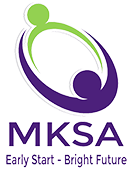What You Need to Know About Autism Spectrum Disorder
February 9, 2018
What is Autism Spectrum Disorder?
Autism Spectrum Disorder (ASD) is characterized by difficulty interacting and communicating with others. Children with ASD also may engage in repetitive behaviors, which could be physical (flapping hands, jumping repetitively) or vocal (repeating videos, making repetitive sounds). Play skills are often immature and repetitive. Severity varies widely and each child on the spectrum presents with a unique array of symptoms. While all children with ASD present with some challenges in the areas of language and socialization, some may have a little or no spoken language and more challenging behaviors that interfere with learning and daily life.
ASD is often diagnosed between the ages of 18 months and 3 years. Studies indicate that autism is five times more common in boys than girls, with a higher risk if a sibling is diagnosed with autism.
INDICATORS OF ASD
Some indicators of ASD may include:
-doesn’t babble/make meaningful gestures by 1 year
-does not speak one word by 16 months
-does not combine two words by 2 years
-does not respond to name
-loses language or social skills
-doesn’t play with toys appropriately
-excessively lines up toys or objects
-no pointing or showing
-does not imitate
-lack of social-emotional reciprocity (i.e. limited or no back-and-forth conversation, reduced sharing of interests/emotions, failure to initiate and respond to social interactions)
-abnormal eye contact and body language; lack of understanding and use of gestures; lack of facial expressions and nonverbal communication
-difficulty in developing, maintaining and understanding relationships; absence of interest in peers
-repetitive motor movement, use of objects or speech (i.e. lining up toys, flipping objects, echolalia)
-insistence on sameness, inflexible adherence to routines (i.e. difficulties with transitions, need to take same route or eat same food every day)
WHAT IS ABA SERVICES?
Applied Behavior Analysis (ABA) is considered the treatment of choice for autism spectrum disorder (ASD).
Through decades of research, the field of behavior analysis has developed many techniques for increasing useful behaviors and reducing those that may cause harm or interfere with learning. ABA uses these techniques and principles to bring about meaningful and positive changes in behavior. Positive reinforcement is one such principle. When a behavior is followed by some sort of incentive or reward, that behavior is more likely to be repeated. ABA therapy sessions often involve one-on-one interaction between the ABA provider and the child. These techniques can be used in structured situations such as the classroom as well as in everyday situations.
MKSA continues to be a leader in bringing standardized testing and ABA services to early intervention. Our agency has some of the area’s most experienced and respected diagnosticians. Experts at ruling out ASD, they use the most current testing procedures, informal observation and clinical judgment, and take the time to make sure they have a complete picture of your child.
Our psychologists have PhDs and are licensed by NY State. The Director of Behavioral Services and many of our ABA staff are NYS Licensed Behavior Analysts (LBAs) and Board Certified Behavior Analysts (BCBAs). ABA team leaders and providers are all experienced special educators with years of education, training, and practical experience in developing programs, and providing individualized instruction to young children with ASD. This expertise is combined with a genuine concern for families and an understanding of the challenges they face.
WHEN SHOULD A CHILD BE EVALUATED FOR AN AUTISM SPECTRUM DISORDER?
An evaluation should be considered if your child demonstrates some of the following “red flags”:
– rarely looks you in the eye for more than a second or two, or seems to be avoiding eye contact
– does not respond when you call his/her name
– does not point at something he wants or to show you an object of interest
– is not beginning to imitate what you do (clapping, “so big,” blowing kisses, etc.)
– demonstrates repetitive motor movements (rocking, hand flapping, jumping), repetitive actions with toys (spinning, throwing to floor repeatedly, lining up), or repetitive vocalizations
-repeatedly vocalizes parts of TV shows, books, or previously heard conversations, often days after he heard them
-has difficulty with changes in daily routines and get inordinately upset when routines may change
– show no interest in his peers and does not observe what other children are doing
As with any concerns, always speak with your pediatrician first. MKSA is here for you, and we are available to answer your questions. If necessary, we can make appropriate referrals. For more information, call (516) 731-5588 or contact us by email.
The information provided in this post is for informational purposes only. It is not designed to be used as a substitute for information provided by medical professional, and is not an attempt to diagnose or treat any condition or situation. Always consult your child’s pediatrician for any concerns.
Some information courtesy of autismcenter.org, National Institute of Mental Health, and DSM-5 checklist
